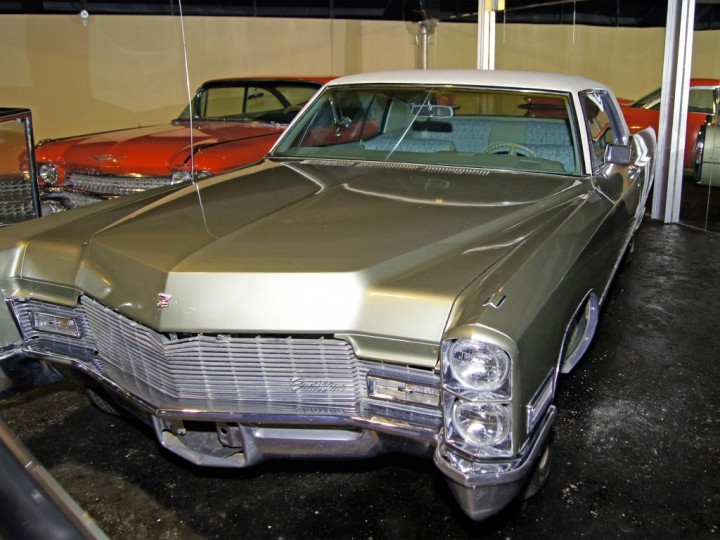1968 Cadillac De Ville
en.wikipedia.org
The de Ville was originally a trim level and later a model of General Motors' Cadillac marque. The first car to bear the name was the 1949 Coupe de Ville, a prestige trim level of the Series 62 luxury coupe. The last model to be formally known as a De Ville was the 2005 Cadillac DeVille, a full-size sedan, the largest car in the Cadillac model range at the time. The next year, the DeVille was officially renamed DTS (an abbreviation standing for DeVille Touring Sedan, itself a trim level on earlier models).
Third generation
Model years : 1965–1970
Assembly : Detroit, Michigan, USA
Body style: 4-door hardtop, 4-door sedan, 2-door hardtop, 2-door convertible
Layout: FR layout
Platform : C-body
Engine : 429 cu in (7.0 L) OHV V8
472 cu in (7.7 L) OHV V8
Transmission : 3-speed TH-400, automatic
Wheelbase : 129.5 in (3,289 mm)
Length :1965–67: 224.0 in (5,690 mm)
1968: 224.7 in (5,707 mm)[4]
1969–70: 225.0 in (5,715 mm)[4]
Width: 1965–68: 79.9 in (2,029 mm)
1969–70: 79.8 in (2,027 mm)
Height : 1965–68: 55.6 in (1,412 mm)
1969–70: 56.2 in (1,427 mm)
Curb weight: 4,600–4,900 lb (2,100–2,200 kg)
Related : Cadillac Eldorado, Cadillac Calais, Buick Electra, Oldsmobile 98
Designer(s) :Bill Mitchell
De Ville denoted Cadillac's mainstream model, falling between the Calais (which had replaced the Series 62) and the Sixty Special and Eldorado. The De Ville was redesigned for 1965 but rode on the same 129.5-inch (3,290 mm) wheelbase. The elevated tailfins were removed, with fins planed flat, and sharp, distinct body lines replaced the rounded look. Also new were a straight rear bumper and vertical lamp clusters. The headlight pairs switched from horizontal to vertical, thus permitting a wider grille. Curved frameless side windows appeared, and convertibles acquired tempered glass backlights. New standard features included lamps for luggage, glove and rear passenger compartments and front and rear safety belts. Power was still supplied by the 340 horsepower 429 cu in (7,030 cc) V8, which would be replaced by the 472 cu in (7,730 cc) for 1968. Perimeter frame construction allowed repositioning the engine six inches forward in the frame, thus lowering the transmission hump and increasing interior room. Pillared sedans appeared on the De Ville series for the first time, while six-window hardtop sedans were dropped. A padded vinyl roof was a $121 extra-cost option on the hardtop model. All four De Ville models had small "Tiffany-like" script nameplates on the ends of their rear fenders just above the chrome side molding.
In 1968 grilles had an insert with finer mesh and step down outer section which held the rectangular parking lights just a little higher than before. Rear end styling was modestly altered with the deck lid having more of a rake. The most obvious change was an 8.5-inch-longer hood designed to accommodate recessed windshield wiper-washers, which now came with three speeds standard. Of 20 exterior paint color combinations, 14 were totally new. On the inside enriched appointments included molded inner door panels with illuminated reflectors and a selection of 147 upholstery combinations, 76 in cloth, 67 in leather and four in vinyl. New standard features included a Light Group, a Mirror Group, a trip odometer and an ignition key warning buzzer. The De Ville also gained a new 472 cu in (7,730 cc) V8 engine rated at 375 hp (SAE gross). 1968 was also the last year for the "stacked" dual headlights, which were replaced with side-by-side dual headlights in 1969. This was





